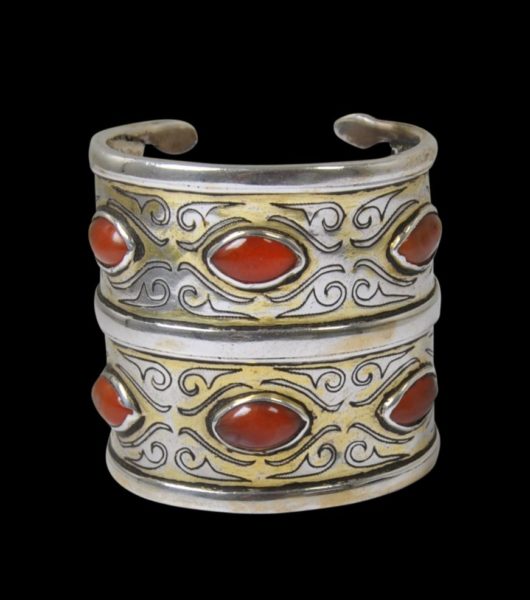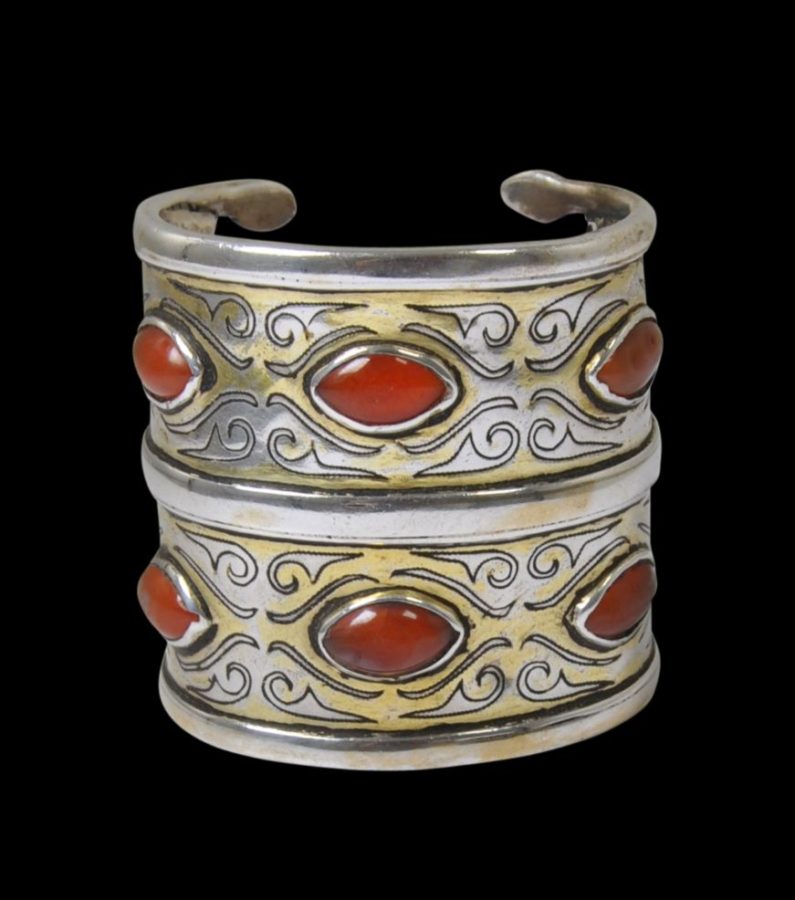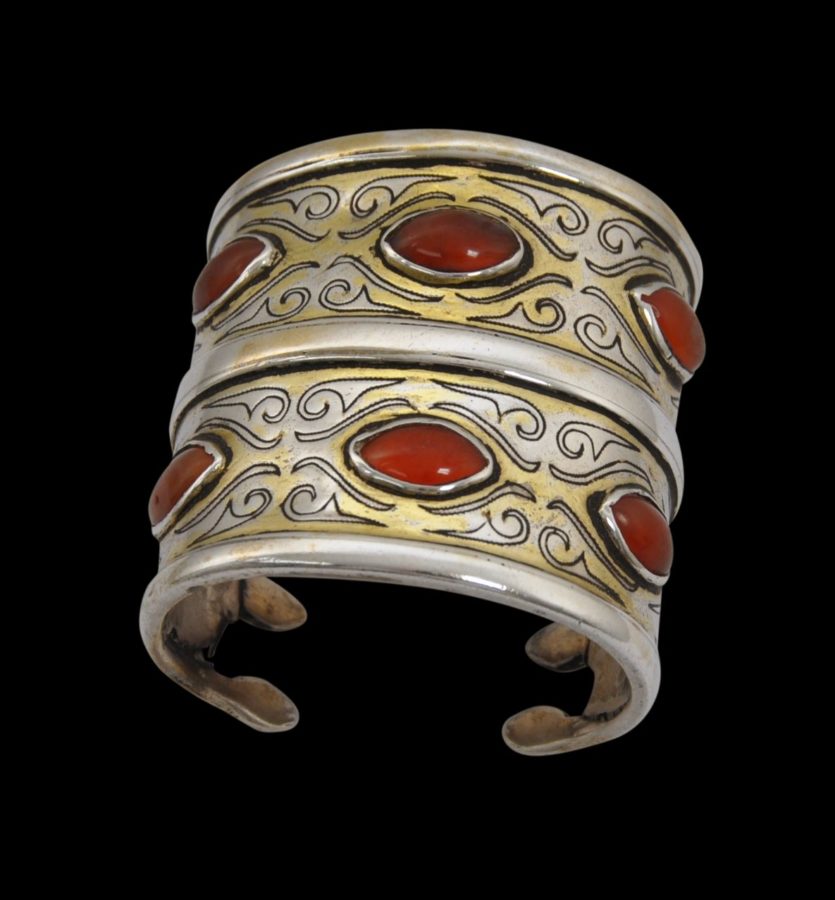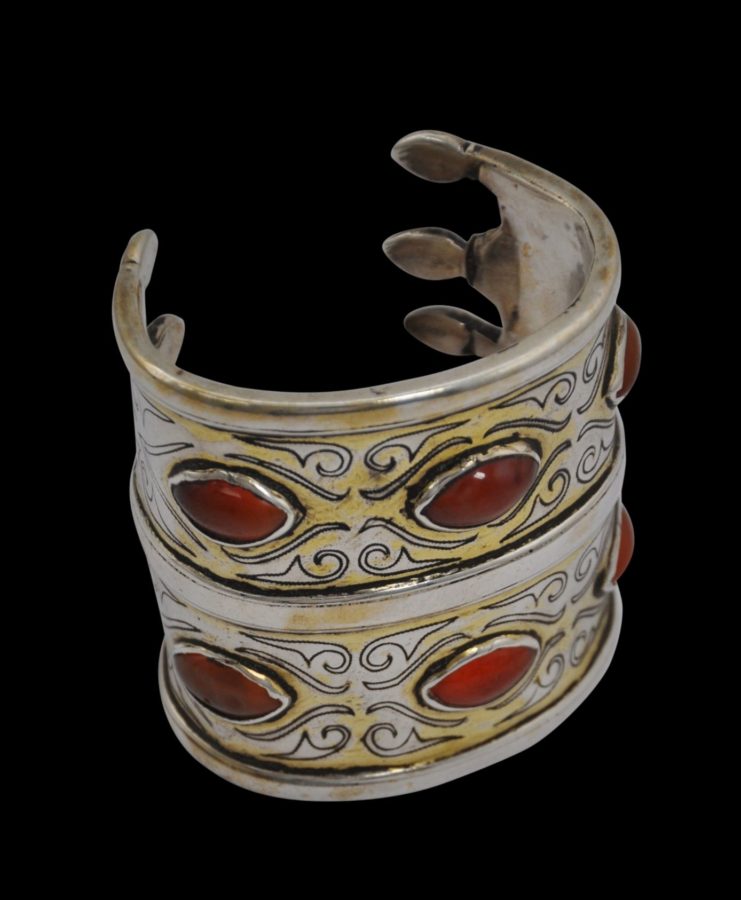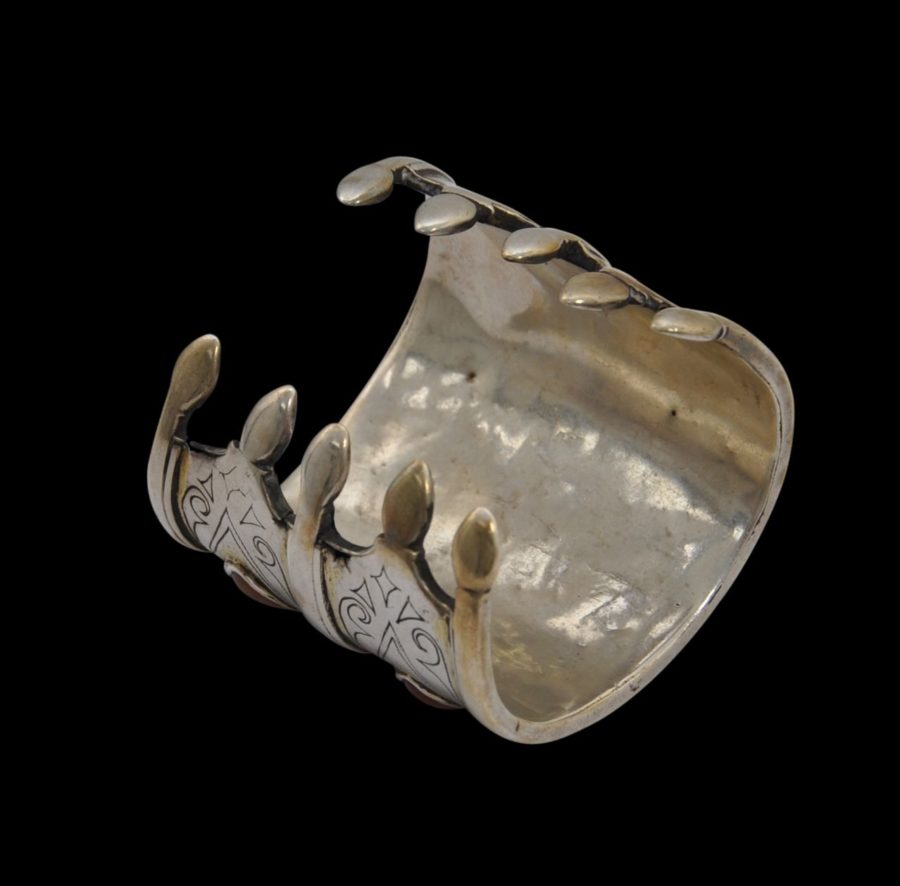Women in the nomadic Tekke (also spelt Teke) communities of what is today Turkmenistan often wore heavy, conspicuous jewellery. Girls were provided with such pieces on marriage as part of their dowry and the pieces were added to as the couple grew more affluent. This cuff bracelet is an example of such jewellery.
The bracelet of high-grade silver is tapered to fit the contours of the wrist. It is decorated with two bands each with foliate swirls and three domed, orange-red carnelians (six in total) and separated by plain, raised borders. The foliate bands are decorated with a fire-gilded background. Carnelian stones were believed to protect the wearer against miscarriage and disease. Red itself was associated with happiness and fertility. Carnelians also have a special place in Islam – the Prophet Mohamed is believed to have worn a silver ring mounted with a carnelian stone.
The fire gilding that has been used in the bracelet is characteristic of Tekke jewellery. The process involved the application of an amalgam of mercury and gold to the surface of the silver. Heating causes the mercury to evaporate leaving a gold layer fixed to the surface. The process was extremely dangerous on account of the mercury fumes.
The bracelet is in ‘C’ form – it is open on one side and edged with serrated, triangular elements known as ‘snake heads’ meant to symbolise life and which give the wearer further talismanic protection.
Most available Turkmen jewellery today are reproduction pieces. This example is not. It has a wonderful patina with clear wear from having been worn many times. The lozenge-shaped edging has been worn smooth from use. Elsewhere, the contours have been softened from use and age. All the stones are original.
References
van Cutsem, A., A World of Bracelets: Africa, Asia, Oceania, America, Skira, 2002.
Masterpieces of Rijksmuseum Volkenkunde, Rijksmuseum Volkenkunde, 2013.


